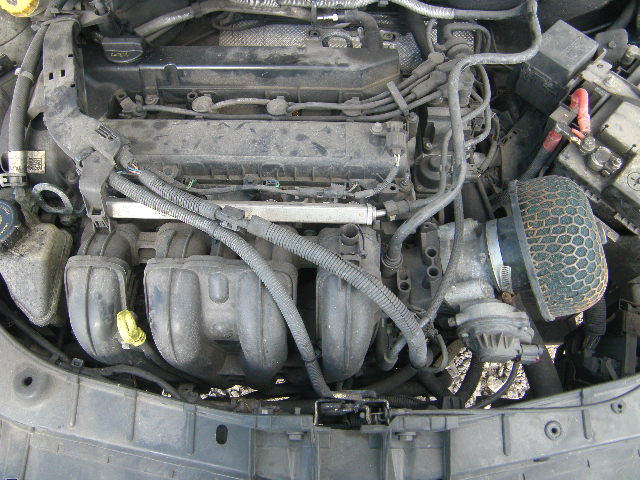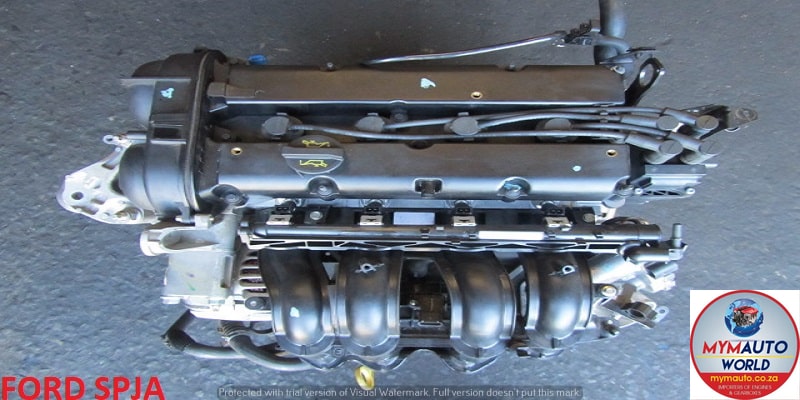Why Regular Maintenance of Your Ford Fiesta Engine Is Essential
Wiki Article
Checking Out the Advancement of Engines: From Timeless Layouts to Modern Marvels
The advancement of engine innovation represents a substantial story in the background of advancement, noted by crucial advancements that have actually consistently redefined transport and market. From the preliminary steam engines that powered the Industrial Revolution to the appearance of inner burning engines that transformed flexibility, each stage has contributed to better effectiveness and capacity. Currently, the change to electrical power indicates not just a technological change however also a more comprehensive commitment to ecological sustainability. As we examine these landmarks, one need to consider exactly how the future of engine design might unravel, challenging our assumptions of power and efficiency.The Birth of Engine Innovation
The advent of engine modern technology marked an essential minute in human development, transforming power conversion and transport. The earliest engines emerged from the requirement to harness mechanical power for functional usage, leading to the advancement of devices that transformed numerous power kinds right into motion. The idea of the engine can be mapped back to old civilizations, where basic equipments, such as the waterwheel and windmill, utilized natural forces to carry out job. It was during the late 17th and early 18th centuries that significant advancements began to appear.The development of the internal burning engine and the development of the vapor engine militarized a profound shift in industrial capabilities. These engines not only boosted performance yet likewise broadened the scope of human wheelchair, making it possible for unmatched transport opportunities. The very early models prepared for the mechanical world, helping with the rise of sectors and reshaping societal frameworks.
As engine styles evolved, they incorporated cutting-edge materials and progressed design principles, leading the way for modern growths - ford fiesta engine. The birth of engine innovation fired up a relentless quest of efficiency and power, establishing the stage for the vibrant development of transportation and industrial machinery that would adhere to
Heavy Steam Engines and Their Impact

The vapor engine's influence was especially evident in the transport industry (ford fiesta engine). Steam-powered engines helped with the rapid motion of goods and individuals across huge distances, properly diminishing the geographical obstacles that had actually formerly hindered profession and interaction. Likewise, steamships changed marine traveling, allowing for quicker and a lot more trustworthy crossings of rivers and oceans.
In market, vapor engines powered factories, allowing automation and the surge of urban facilities as centers of economic activity. This change not just modified labor dynamics however additionally added to the introduction of a consumer-driven culture. Heavy steam innovation promoted innovations in engineering and manufacturing processes, laying the groundwork for future developments in engine style. The heritage of steam engines is profound, reflecting an essential minute in human resourcefulness and the unrelenting pursuit of progress.
The Increase of Internal Combustion
Frequently overshadowing steam power, the rise of inner burning engines marked a transformative shift in transportation and sector throughout the late 19th and very early 20th centuries. The advancement of these engines, characterized Go Here by their ability to melt gas within the engine itself, allowed higher effectiveness and power compared to conventional heavy steam engines. Pioneering creators such as Nikolaus Otto and Rudolf Diesel played critical roles in improving engine designs, causing widespread adoption in autos, watercrafts, and industrial equipment.The interior combustion engine's portable size and reasonably light-weight nature helped with the emergence of individual cars, transforming specific mobility and improving metropolitan landscapes. By allowing faster important link traveling and the effective transportation of products, these engines militarized economic development and promoted globalization. The versatility of gas choices, including fuel and diesel, even more improved their appeal, permitting varied applications across different fields.
In spite of the ecological worries that would later emerge, the preliminary attraction of internal burning technology lay in its transformative possibility. As society accepted this development, the structure was laid for modern-day transportation systems, establishing inner combustion engines as a foundation of commercial improvement and day-to-day live throughout the 20th century.
Advancements in Engine Effectiveness
As inner combustion engines ended up being integral to transport and industry, the emphasis moved towards improving their effectiveness to fulfill growing demands for efficiency and sustainability. Innovations in engine design, material science, and modern technology have actually significantly contributed to this development.One significant innovation is the development of turbocharging, which enables enhanced air intake, leading to more total gas burning and boosted power result without enlarging engine size. Additionally, variable valve timing systems have actually been implemented to optimize engine performance throughout numerous RPM ranges, thus improving fuel effectiveness.
The usage of sophisticated fuel injection modern technologies, such as straight shot, has actually likewise played a critical duty. This approach permits even more accurate control over the fuel-air mix, promoting better burning and decreasing discharges. Additionally, lightweight materials, including aluminum and composite elements, have been adopted to lower overall engine weight, resulting in enhanced efficiency.
These advancements reflect a broader fad within the vehicle industry, where the harmony between design advancement and environmental factors to consider drives the continuous mission for higher effectiveness in internal burning engines. Because of this, modern-day engines are now more effective, cleaner, and efficient than ever, paving the way for a much more lasting future in transportation.
The Change to Electric Power
With growing problems over environmental influence and fossil fuel dependency, find more information the vehicle industry is experiencing a substantial shift towards electric power. This change is driven by a mix of technological innovations, governing pressures, and changing consumer choices. Electric cars (EVs) supply a compelling option to typical inner combustion engines, flaunting decreased greenhouse gas discharges and reduced operating expense.The rise of battery technology has actually been a video game changer, with lithium-ion batteries becoming a lot more cost-efficient and efficient. Enhanced energy thickness and faster billing capabilities have made EVs a lot more sensible for day-to-day use. Governments worldwide are implementing incentives and setting ambitious targets for phasing out fossil fuel vehicles, thereby increasing the fostering of electrical power.
As billing framework expands and battery modern technology proceeds to enhance, the shift to electrical power is positioned to reshape the automotive landscape, advertising sustainability and advancement in the years to come. The future of transportation is electrical, and the energy is undeniable.
Verdict
The advancement of engine technology stands for a substantial trajectory of advancement that has actually profoundly affected transport and industry. From the fundamental vapor engines to the transformative internal burning engines, each development has contributed to improved wheelchair and financial growth.
Report this wiki page